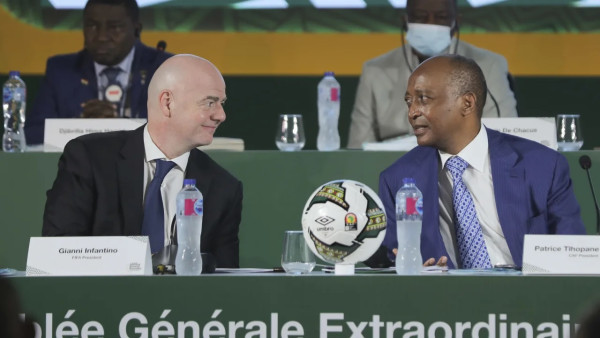Without offering an explanation, cash-strapped Caf has removed a valid proposal from the Zambian FA to cut costs. The reason why is closely related to Gianni Infantino’s fight for re-election.
By Philippe Auclair
Caf, who will hold its 44th ordinary general assembly on 10 August in Tanzania, has mysteriously withdrawn from its agenda a proposal by the Football Association of Zambia (FAZ) which would save millions of dollars for the quasi-bankrupt confederation. Why? Information received by Josimar strongly suggests that the motivations for Caf's refusal to discuss the Zambian motion are primarily political: its terms would weaken the growing stranglehold of Caf president Patrice Motsepe on the organisation, eight months before his close ally Gianni Infantino seeks re-election at the head of Fifa.
Gianni Infantino almost jumped the gun. On 30 March of this year, in a statement published in, of all places, Qatar's capital Doha, secretary general Fatma Samoura called for candidates to Fifa's 2023 presidential election to get going. Almost immediately printed endorsement forms were sent out by Fifa minions to football officials in Europe and South America, with instructions to send them back, once filled out of course, to Samoura.
Infantino's ally Amaju Pinnick, president of the Nigerian Football Federation and former vice-president of Caf's executive committee, was also circulating these forms and even boasted of his role as Infantino's cheerleader-in-chief to one of Josimar's sources. According to this source, Pinnick had said that Africa's support for Infantino's candidacy was guaranteed, giving Infantino 54 votes out of the 106 he needed to ensure a majority. The election will take place ...



